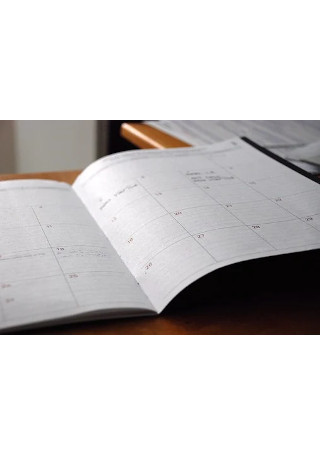Skills, behavior, talent, issues, goals—you can gather as much information as you want in a face-to-face interview. It helps you learn an applicant's career plan, discover a student's strengths…
continue reading
12+ Sample Visual Schedules
-
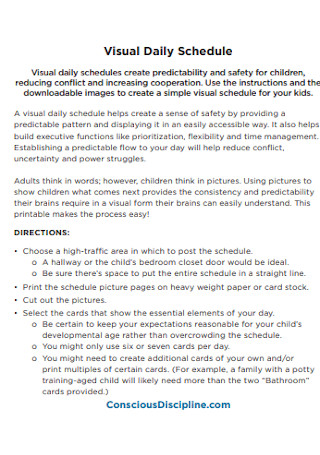
Visual Daily Schedule
download now -
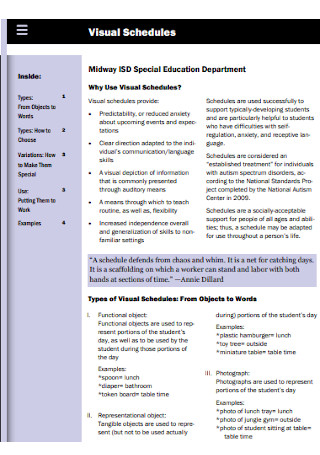
Education Visual schedule
download now -

Daily Visual Schedule Resource
download now -
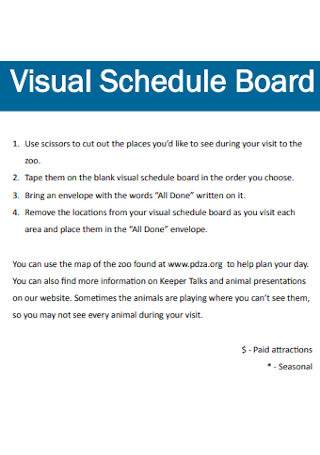
Visual Schedule Board Template
download now -
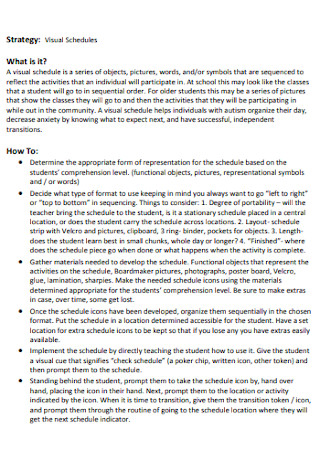
Visual Strategy Schedules
download now -
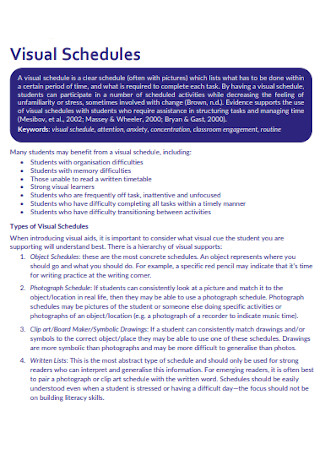
Visual Schedules Format
download now -
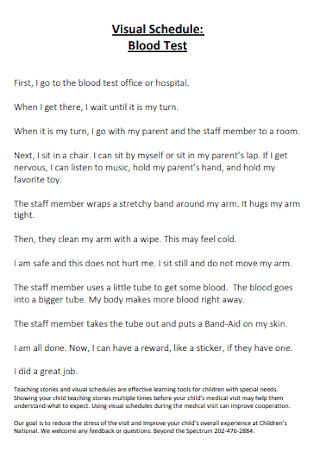
Visual Blood Test Schedule
download now -
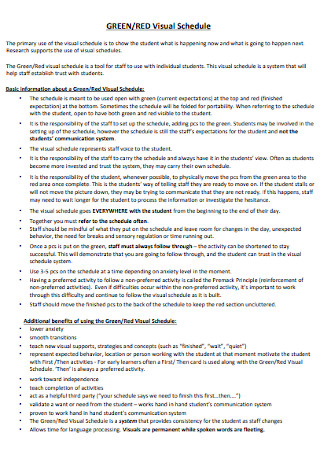
Red Visual Schedule Template
download now -
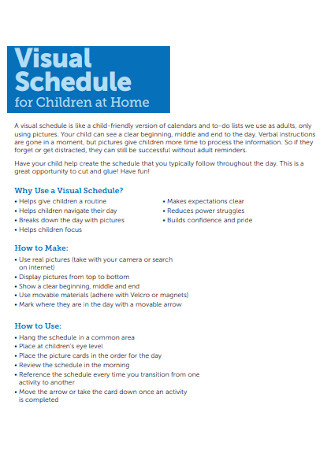
Visual Schedule for Children Home
download now -
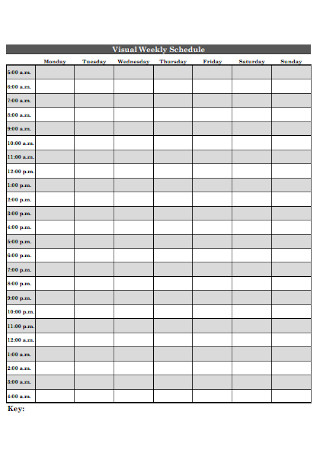
Visual Weekly Schedule Template
download now -

Sample Visual Daily Schedule Template
download now -

Basic Visual Schedule Template
download now -
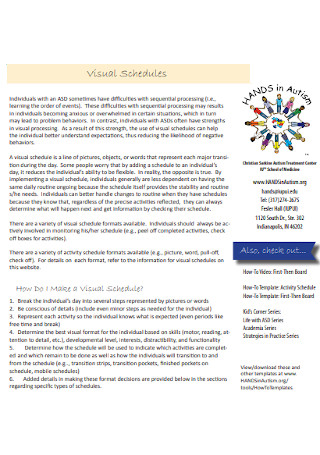
Standard Visual Schedules Template
download now
Visual Schedules: What Are They?
A visual schedule is self-explanatory; it is a detailed schedule of any purpose. However, it is presented with visuals rather than the usual wordy tables and a list of tasks among general schedules. Thus, a visual schedule marks the graphical representation of scheduled activities. And it is often used to break down tasks into a series of steps, making it easier to follow for kids, students, and those with ASD.
Based on a survey, 59% of Americans struggle with balancing their personal and work schedules.
Why Should You Use Visual Schedules?
Visual schedules actually involve many benefits. And that explains a lot about why many people and organizations practice visual scheduling in the first place. So to be more specific, here are the reasons why you should use a visual schedule:
How to Create a Visual Schedule
Indeed, visual schedules guide you on where you should be and when to actually be there. But making such schedules may vary in design, needs, length, and purpose. But, you can surely ace creating it by following these four easy steps below:
Step 1: Note Your Schedule’s Purpose and List of Activities
What is your visual schedule specifically for? Are you scheduling for work, for personal tasks, or maybe for school activities? Note them down. That way, you will be sure of how to structure your schedule. Most importantly, brainstorm all the activities to achieve with their corresponding schedules. You will slowly insert the whole task list into your sample visual schedule and present them visually and creatively.
Step 2: Consider the Form of Representation
What do the visual aspects in your graphic schedule represent? You have to assign their specific legends and that your audience understands them to ensure effectiveness. For example, you could indicate a sun to represent the morning routine and the moon to represent the night tasks. Or perhaps, you insert a picture of food to represent snacks or break time in school. And setting the symbols and their legends can be presented in a tabular chart.
Step 3: Adjust Your Schedule’s Length and Format
You also have to consider how long the whole schedule is because that is your basis on how to present properly. For example, you can summarize a long and wordy instruction into one clear picture of representation to save space and lessen the schedule’s content. And don’t forget to adjust your schedule’s format and design as well. The key is to implement an easy-to-follow schedule so people won’t have to suffer in sticking to that document.
Step 4: Motivate Audiences to Follow the Schedule
Lastly, find a way to trigger audiences into following the schedule you presented. For example, you put the visual schedule’s location in a place that is very visible to the public eye. Hence, no one would miss what it says. Or perhaps, in the classroom setting, you encourage students to mark the tasks they completed and rewards go to those who completed the most tasks. It all comes down to your creativity in the end.
FAQs
How does a visual schedule help the students with ASD?
Visual schedules are known for improving receptive language. Moreover, the practice has helped students with autism with visuospatial skills and attention. And with chances of reducing anxiety and resistance in following activities, it can help a lot.
What are some examples of visuals that can be used in a visual schedule?
All sorts of visuals are acceptable in a visual schedule as long as you know how to present them appropriately and creatively. Examples of visuals include pictures, icons, symbols, signs, objects, paintings, acronyms, and even tangible supports.
What does VAS mean?
VAS is short for visual activity schedules. And they are evidence-based schedules that have helped many people according to research. Thus, such visual support has been practiced for years.
Thanks to the visual schedule’s simple way of detailing every task to do along with its corresponding time visually, being productive can be achieved. Slowly but surely, scheduling with easy-to-understand representations would be understood by the public. But how you create it affects the schedule’s effectiveness and success rate. Download professionally-made sample visual schedules as your guide now!

